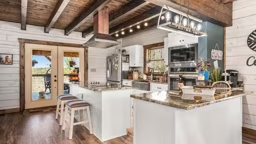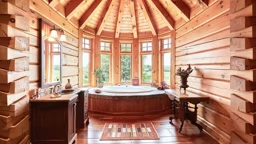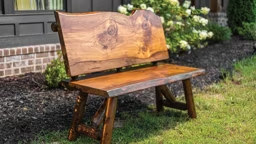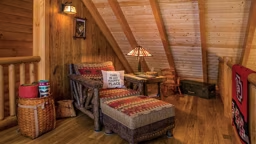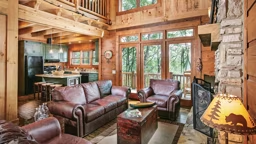| Space-Saving Techniques for Homes A Smarter Approach to Small Space Living |
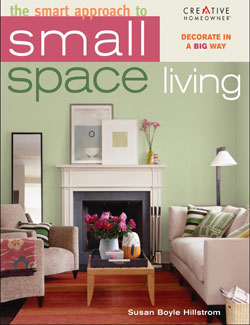 Susan Boyle Hillstrom, author of Creative Homeowner’s "The Smart Approach to Small Space Living," spills her small-home secrets:
Susan Boyle Hillstrom, author of Creative Homeowner’s "The Smart Approach to Small Space Living," spills her small-home secrets:Can you tell us a little bit about your background? I was executive editor of House Beautiful Special Publications for many years. Currently I do freelance writing for magazines and books. I’ve done several books for Creative Homeowner, including The Smart Approach to Small Space Living.
Kitchens have really become the heart of the home. In smaller spaces, what are the must-haves for your kitchen? To make a small kitchen look bigger and function well, a homeowner can design an open-plan layout or remove a wall or part of a wall to open the kitchen to surrounding areas. Even a large pass-through can create the illusion of space.
Also, choose small-scale appliances, keep cabinet color and wall color the same, use glass doors on upper cabinets and minimize counter clutter.
You point out that storage is key, especially in a small home. What are the best ways of incorporating storage in a home? Build it in. Bookcases or narrow cabinets can be tucked into the space between windows, on either side of a fireplace or in existing niches or alcoves. Other storage can be added to the unused space under a stairway. Window seats, which are easy to build in, provide extra seating with storage underneath.
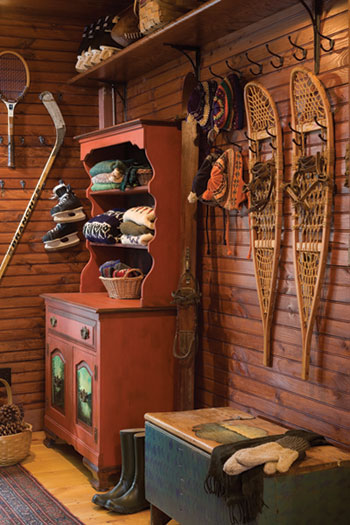 Built-ins are great for hidden storage, but in log homes they sometimes hide the beautiful logs. Are there good storage alternatives out there? There's an amazing amount of double-duty and convertible furniture that offers storage without using up wall space. For example, coffee tables may have deep storage underneath; some end tables also provide hidden shelves. There are ottomans and chairs with lids that lift up to reveal storage compartments... the list goes on. An Internet search turns up a lot of these pieces, some pretty weird but most very useful.
Built-ins are great for hidden storage, but in log homes they sometimes hide the beautiful logs. Are there good storage alternatives out there? There's an amazing amount of double-duty and convertible furniture that offers storage without using up wall space. For example, coffee tables may have deep storage underneath; some end tables also provide hidden shelves. There are ottomans and chairs with lids that lift up to reveal storage compartments... the list goes on. An Internet search turns up a lot of these pieces, some pretty weird but most very useful. You can also find coffee tables that become dining tables; dining tables that double as desks; chairs that become single beds. These don't offer storage, per se, but they do keep furniture to a minimum in small rooms.
When it comes to decor, are there color schemes or patterns that owners of smaller homes should stay away from? Conventional wisdom says to stay away from dark wall colors. And while it is true that light tones make a room feel larger, sometimes a rich, dark color creates warmth and intimacy, which may also be desirable, especially in a log home.
To visually expand space, it’s best to avoid colors that contrast harshly from room to room. Using the similar colors throughout one level, for instance, creates a cohesive look that makes the overall feel roomier.
In small rooms, small-scale wall-covering patterns against a white or light background are generally best for maximizing the feel of space. But you can use even splashy prints effectively; just be sure to use only one print and coordinate it in color and scale with the furniture and fabrics in the room. Otherwise, it'll look chaotic.
Are there some easy, low-cost ways to make a small space seem larger? The lowest-cost way is to eliminate clutter and fussy furniture; let light in by getting rid of elaborate window treatments and using simple shades or sheer curtains — or nothing at all; and paint any drywalled portions of the rooms a light shade.
Slightly more difficult tricks include removing walls or portions of walls to open up space, adding windows or enlarging existing ones, widening doorways and raising ceilings. If the eye can travel from room to room, the spaces seem bigger.
Log homeowners are all about their outdoor spaces. How should porches and decks be designed to maximize their usefulness? A porch or deck is most useful when you can cook, eat, hang out and even sunbathe, so it should have access to the kitchen and be large enough to hold some cooking equipment, a dining table and a couple of chairs for relaxing. A roof or a big umbrella will make it useful in rainy weather as well.
You dedicate an entire chapter to lighting in your book. Why is lighting so important? A combination of abundant natural light and well-planned artificial light can make small rooms feel bigger and more welcoming, and effective lighting can also create a cozy intimate atmosphere.




